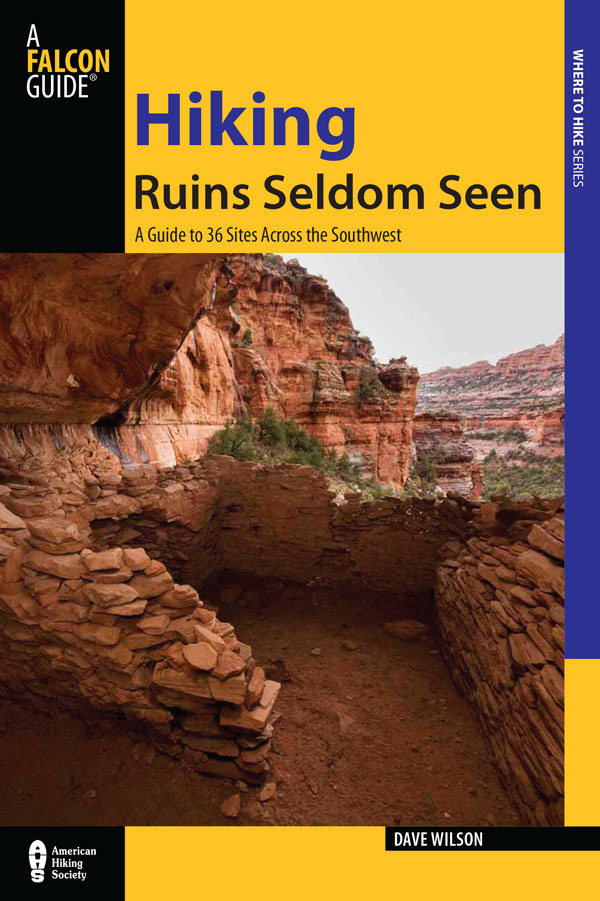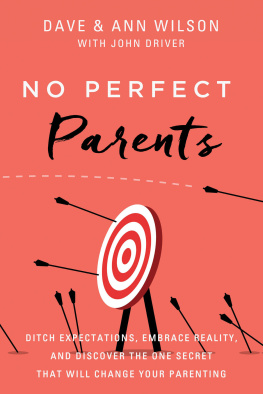Dave Wilson - Hiking ruins seldom seen: a guide to 36 sites across the southwest
Here you can read online Dave Wilson - Hiking ruins seldom seen: a guide to 36 sites across the southwest full text of the book (entire story) in english for free. Download pdf and epub, get meaning, cover and reviews about this ebook. City: Guilford;Connecticut;New Southwest;Southwest;New, year: 2011;2013, publisher: Falcon Guides;Globe Pequot Press, genre: Home and family. Description of the work, (preface) as well as reviews are available. Best literature library LitArk.com created for fans of good reading and offers a wide selection of genres:
Romance novel
Science fiction
Adventure
Detective
Science
History
Home and family
Prose
Art
Politics
Computer
Non-fiction
Religion
Business
Children
Humor
Choose a favorite category and find really read worthwhile books. Enjoy immersion in the world of imagination, feel the emotions of the characters or learn something new for yourself, make an fascinating discovery.

- Book:Hiking ruins seldom seen: a guide to 36 sites across the southwest
- Author:
- Publisher:Falcon Guides;Globe Pequot Press
- Genre:
- Year:2011;2013
- City:Guilford;Connecticut;New Southwest;Southwest;New
- Rating:4 / 5
- Favourites:Add to favourites
- Your mark:
- 80
- 1
- 2
- 3
- 4
- 5
Hiking ruins seldom seen: a guide to 36 sites across the southwest: summary, description and annotation
We offer to read an annotation, description, summary or preface (depends on what the author of the book "Hiking ruins seldom seen: a guide to 36 sites across the southwest" wrote himself). If you haven't found the necessary information about the book — write in the comments, we will try to find it.
Dave Wilson: author's other books
Who wrote Hiking ruins seldom seen: a guide to 36 sites across the southwest? Find out the surname, the name of the author of the book and a list of all author's works by series.
Hiking ruins seldom seen: a guide to 36 sites across the southwest — read online for free the complete book (whole text) full work
Below is the text of the book, divided by pages. System saving the place of the last page read, allows you to conveniently read the book "Hiking ruins seldom seen: a guide to 36 sites across the southwest" online for free, without having to search again every time where you left off. Put a bookmark, and you can go to the page where you finished reading at any time.
Font size:
Interval:
Bookmark:

Hiking Ruins Seldom Seen
A Guide to 36 Sites Across the Southwest
Second Edition
Dave Wilson

HELP US KEEP THIS GUIDE UP TO DATE
Every effort has been made by the author and editors to make this guide as accurate and useful as possible. However, many things can change after a guide is publishedtrails are rerouted, regulations change, techniques evolve, facilities come under new management, and so on.
We would appreciate hearing from you concerning your experiences with this guide and how you feel it could be improved and kept up to date. While we may not be able to respond to all comments and suggestions, well take them to heart, and well also make certain to share them with the author. Please send your comments and suggestions to the following address:
Globe Pequot Press
Reader Response/Editorial Department
P.O. Box 480
Guilford, CT 06437
Or you may e-mail us at: editorial@GlobePequot.com
Thanks for your input, and happy trails!
For Marie, the best woman in the world to come home to.

Copyright 1999, 2011 by Morris Book Publishing, LLC
ALL RIGHTS RESERVED. No part of this book may be reproduced or transmitted in any form by any means, electronic or mechanical, including photocopying and recording, or by any information storage and retrieval system, except as may be expressly permitted in writing from the publisher. Requests for permission should be addressed to Globe Pequot Press, Attn: Rights and Permissions Department, P .O. Box 480, Guilford, CT 06437.
FalconGuides is an imprint of Globe Pequot Press.
Falcon, FalconGuides, and Outfit Your Mind are registered trademarks of Morris Book Publishing, LLC.
Photos by Dave Wilson unless otherwise noted
Project editor: David Legere
Layout artist: Kevin Mak
Maps created by Trailhead Graphics Inc. Morris Book Publishing, LLC
Library of Congress Cataloging-in-Publication Data is available on file.
ISBN 978-0-7627-9724-0
The author and Globe Pequot Press assume no liability for accidents happening to, or injuries sustained by, readers who engage in the activities described in this book.
Contents
Acknowledgments
Special thanks to J. Scott Wood, forest archaeologist for the Tonto National Forest, and to David K. Wright, project director, Cultural Resource Management Program, Gila River Indian Community, for reviewing this book and providing invaluable feedback on information pertaining to archaelogy and the prehistory of the Southwest. Thanks also to many others with the USDA Forest Service, U.S. Park Service, Bureau of Land Management, and Maricopa County Parks and Recreation for helping to ensure the hiking information pertaining to their districts is accurate.
Introduction
I have loved the outdoors ever since I left the maternity ward and got a chance to see it. I vowed that as soon as I could walk, Id begin hiking. And I did.
It wasnt until I was in my thirties, though, that I happened upon something in Arizonas Sierra Ancha that I had never seen before, at least not in the wilderness: a large, amazingly preserved prehistoric cliff dwelling. I was so fascinated by the placejust out in the middle of nowherethat I was soon actively hunting for more archaeological sites.
To find them, I went to Arizona State University and University of Arizona libraries, where I sifted through research papers written by archaeologists for... well... not for hikers like me. At first I struggled with jargon like lithics (stone tools), plainware (undecorated pottery), and anthropomorphic pictographs (paintings of people on rocks), but it wasnt long before I decoded the scientific reports and began using them to locate a plethora of prehistoric pueblos, cliff dwellings, and rock art sites in the wild.
I also love writing and photography. Mostly I create promotional publications for corporations, but every now and then even the best PR/marketing persons have to pen something thats actually interesting, just to make sure they still have a pulse. Since Native American ruins had emerged in my life as a genuinely interesting topic, I decided to combine the subject with hiking and create Hiking Ruins Seldom Seen .
Falcon Press first published this guide in 1999. In 2010 the publisher called me back and said that over the years it has been one of their better selling hiking guides. (This came as a surprise, as I never actually read my royalty statements.) Then they asked if Id like to update the book. So here it is, all revisedcomplete with a redesigned cover that, at this writing, not even I have seen.
A Decade of Change
How do you revise a hiking guide? Well, you retake every hike to see whats changed. Not surprisingly, much of the information about roads, trails, and routes leading to the ancient pueblos, cliff dwellings, and rock art sites needed to be updated.
Over time some places have become easier to reach because of improved roads or trails. Other archaeological sites, however, have become more difficult to reach because of deteriorating roads and trails. Frankly, I was always happier to discover the latter. I believe strongly that the public should be allowed to visit most ruins on public land. That does not mean, however, that access to every single site should be made easy. If you want to visit a ruin in the wilderness, you should earn the right to do so through physical effort. So if the road to a ruin gets completely washed away, I say Hooray!
At the same time, I recognize the value of more popular archaeological sites like Tuzigoot, Montezuma Castle, and Tonto National Monument that have rightly been made easily accessible for everyone. I myself have enjoyed these places. I dont advocate an elitist approach to cultural resource management. I advocate balance. For every archaeological site thats been tamed or engulfed by modern development, there should be at least one in the wild thats still challenging to reachlike most of those described in this guide.
Despite all this talk of roads and trails, it was not changes to the driving/hiking routes that concerned me most when I set out to revisit all the archaeological sites in the first edition. I was far more concerned about the final destinationsthe archaeological sites themselves. I was almost afraid to return to every site. What if hikers had destroyed them? What if publishing the locations of these fragile places in the first edition of my book had contributed to their demise?
After returning to all the sites in 2010, I was extremely pleased to discover that they looked exactly the same as they did in the mid-1990s. Prehistoric walls that used to be intact still were. Rock art that appeared untouched when I first saw it still looked that way. All the artifacts I remembered, even prominent ones like metates and manos, were still lying around. Granted, I did not spend as much time reinvestigating each site as an archaeologist or site steward might, but as far as I could tell, hikers over the past decade had treated these places with respect. This bodes very well for the hiking culture that exists in the Southwest. It supports what I have believed all alongthat hikers in general place a high value on preservation. It confirms my long-held opinion that if theres some hiking distance between an archaeological site and the nearest motorized access, that distance will weed out other types of recreationists who may or may not value preservation to the same extent.
Font size:
Interval:
Bookmark:
Similar books «Hiking ruins seldom seen: a guide to 36 sites across the southwest»
Look at similar books to Hiking ruins seldom seen: a guide to 36 sites across the southwest. We have selected literature similar in name and meaning in the hope of providing readers with more options to find new, interesting, not yet read works.
Discussion, reviews of the book Hiking ruins seldom seen: a guide to 36 sites across the southwest and just readers' own opinions. Leave your comments, write what you think about the work, its meaning or the main characters. Specify what exactly you liked and what you didn't like, and why you think so.


